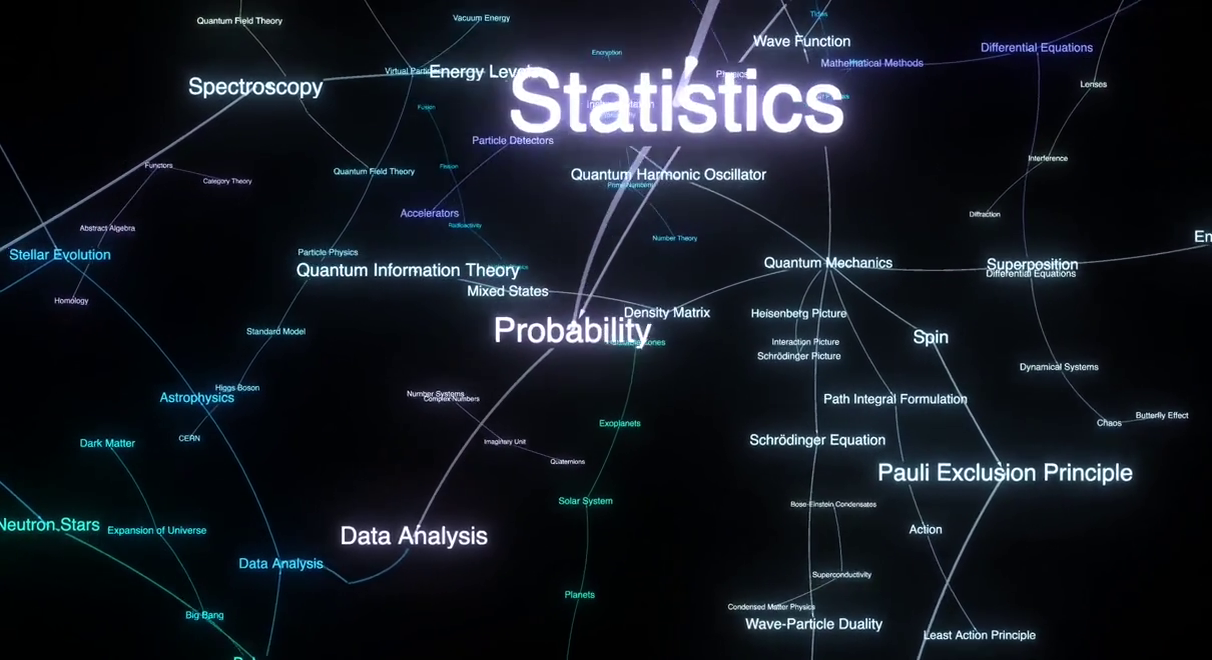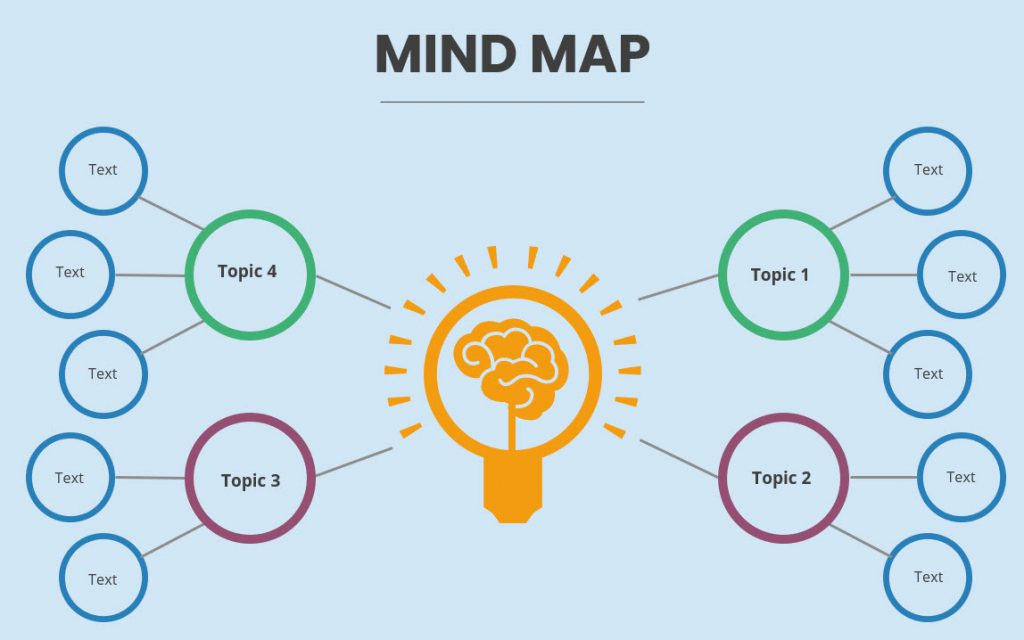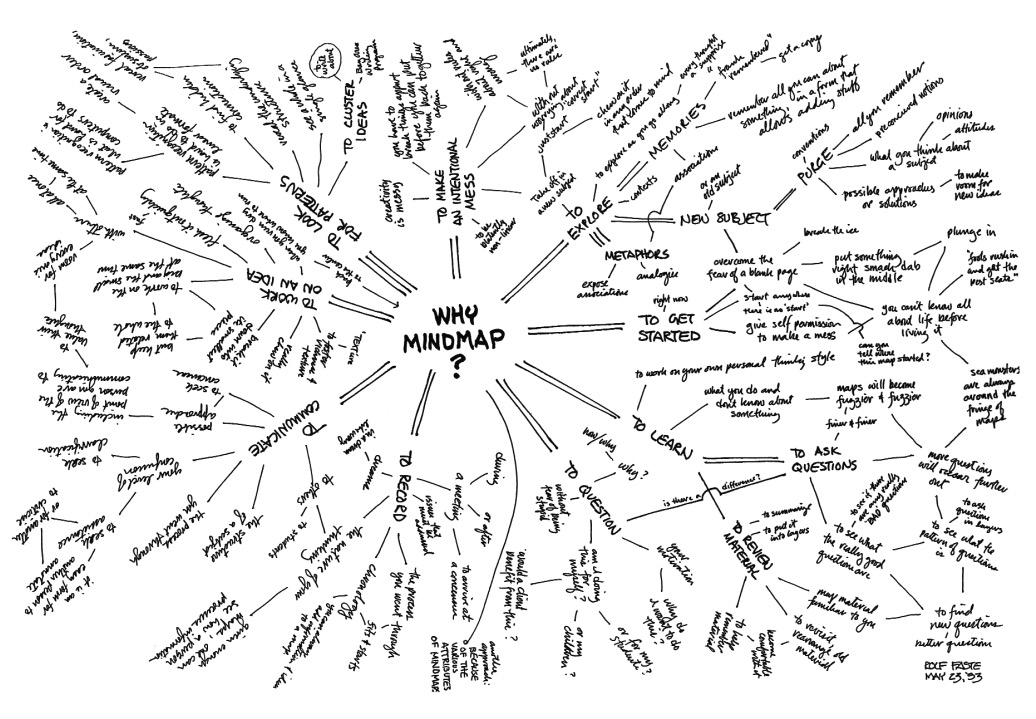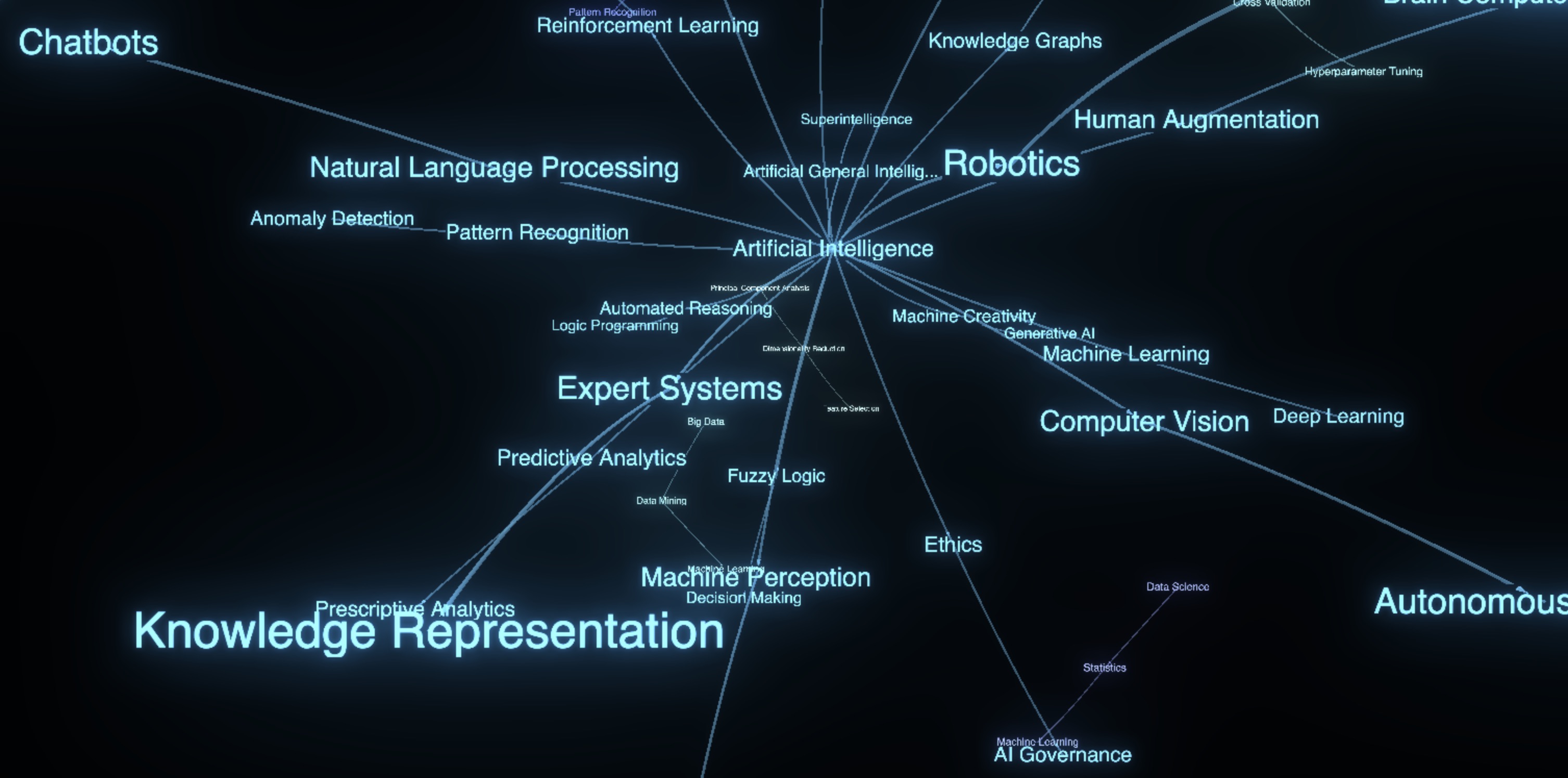Why Concept Maps Beat Mind Maps in the Age of AI
Discover why concept maps beat mind maps for AI collaboration. Learn how Think Machine's AI-powered concept map maker creates breakthrough insights.

AI can now understand complex relationships and synthesize knowledge from multiple sources. But you're still probably using 1970s mind mapping technology to feed it simple hierarchies—and missing the real power of AI-assisted thinking.
Think Machine is an AI-powered concept map maker specifically designed for AI collaboration. Learn why concept maps are the future of knowledge work and how to leverage them for breakthrough insights.
Why Mind Maps Fall Short
Mind maps were revolutionary in the 1970s—but they're showing their age in the era of AI concept mapping. Here's why they're actually holding you back:

Real information isn't hierarchical. Mind maps force everything into neat branches radiating from a central idea. But think about any complex topic—marketing, climate change, or even planning a vacation. The relationships are messy, interconnected, and multi-directional. When you squeeze real-world complexity into a simple hierarchy, you lose the nuanced connections that matter most.
They focus on details when AI can handle that. Traditional mind maps encourage you to break everything down into smaller and smaller branches. But in 2025, ChatGPT can generate detailed explanations, lists, and sub-points in seconds. Your time is better spent on high-level relationships and strategic thinking—not cataloging every detail manually.
They collapse under complexity. Ever tried to create a mind map for a complex project with more than 20 concepts? It becomes a tangled mess. The more connections you need, the more unreadable it becomes.

Modern AI systems excel at understanding networks of relationships—like the knowledge graphs that power search engines. But mind maps create artificial hierarchies that don't match how AI processes information. When you feed a mind map to an AI system, you're essentially forcing it to work with one hand tied behind its back.
The result? You're using 1970s technology to collaborate with 2025 intelligence. That's like trying to browse the internet with a rotary phone.
Why Concept Maps Work So Well with AI
Concept mapping software designed for AI collaboration changes everything. Here's why concept maps are the superior choice:
Concept maps compress knowledge at the right level. Instead of getting lost in details, concept maps force you to think about high-level relationships and core ideas. You map out that "Customer acquisition connects to Product development through User feedback"—and let AI fill in the specific tactics, examples, and implementation details. This is knowledge compression at its finest: you handle strategy, AI handles execution.
Text-based with 3D visualization creates the best of both worlds. Think Machine's concept maps are built on simple text that AI can read and understand, but visualized in 3D space that your brain can navigate intuitively. Change the text, and the visualization updates instantly. Navigate the 3D space, and the text reflects your exploration. This two-way editing means you can think visually but communicate with AI textually.
Context makes all the difference. In Think Machine, "Apple" can simultaneously connect to "iPhone design" in your tech context and "fruit nutrition" in your health context—without confusion. The AI understands that these are related concepts but different contextual meanings through our Cascading Context system. Traditional mind maps would force you to choose one or create confusion. Concept maps embrace the complexity.
Your map becomes a custom AI prompt. Every concept map you build is essentially a structured prompt that gives AI an incredibly accurate representation of your knowledge and thinking. The more connections you make, the better the AI understands your intent, your priorities, and your unique perspective. It's like having a personalized AI assistant that knows exactly how you think.
Ultimate flexibility with simple connections. Our connection format lets you build any relationship: A connects to B, which connects to C, which loops back to A if needed. Linear thinking (A→B→C→D), circular processes, complex networks—all supported naturally. The AI can traverse these connections in any direction to find insights you'd never discover manually.
The result? You're not just using AI—you're thinking with AI in a way that amplifies both human creativity and machine intelligence.
Watch AI generate a complex philosophy concept map in seconds
Why 3D Concept Maps Change Everything
Your knowledge isn't flat, so why map it that way?
2D works for simple stuff. Organization charts, basic hierarchies, step-by-step processes—these fit perfectly on a flat surface. But real-world information is messy, interconnected, and multi-layered. When you force complex relationships into 2D, you're cramming a sphere into a square. Something's got to give, and it's usually the nuanced connections that matter most.
3D gives you room to think. That extra dimension isn't just visual flair—it's cognitive space. You can separate different types of relationships spatially: put foundational concepts at the bottom, current projects in the middle, and future possibilities floating above. Related ideas can cluster together in 3D space without competing for the same flat real estate. No more choosing between showing Connection A or Connection B because they cross paths.
3D actually reduces mental overhead. This sounds counterintuitive, but hear us out. In 2D, your brain has to do extra work to mentally separate overlapping concepts and crossing lines. In 3D concept maps, you can organize information the way your brain naturally wants to—with spatial relationships, depth, and layers. It's like the difference between organizing papers on a desk versus in a filing cabinet. More dimensions = better organization = less cognitive work.
AI navigates 3D knowledge naturally. Modern AI systems don't think in flat hierarchies—they work with multi-dimensional networks of relationships. When you build 3D concept maps, you're creating knowledge structures that AI can explore more naturally, finding connections across different layers and dimensions that would be impossible to represent in 2D.
Real-world complexity demands real-world visualization. Climate change, business strategy, personal relationships, market dynamics—these aren't flat topics. They have depth, context, and interconnections that span multiple dimensions. 3D concept maps finally give you a way to visualize and work with information the way it actually exists: complex, interconnected, and beautifully messy.
The result? You can finally see the forest, the trees, and how they all connect—without your brain getting tangled up in visual chaos.
Navigate through complex 3D concept maps with natural, intuitive movement
Connect Your Concept Maps to Notes
Most concept mapping tools force you to choose: detailed notes OR visual maps. Think Machine is the first to seamlessly connect both—and it changes everything.
Your notes and maps are automatically linked. Every concept in your map can connect to detailed notes, and every note can spawn new concepts for your map. Write about "Machine Learning Ethics" in your notes, and it automatically becomes available as a concept in your maps. Add a concept called "Data Privacy" to your map, and you can instantly dive into detailed notes about it. No manual linking, no broken connections, no maintaining two separate systems.
True bidirectional sync. Edit a concept name in your map, and it updates everywhere in your notes. Add new insights to your notes, and the connected concepts in your map reflect that new knowledge. This isn't just convenience—it's a completely different way of thinking. You can seamlessly zoom from the 30,000-foot conceptual view down to the detailed implementation notes and back up again.
Your knowledge becomes a living system. Instead of static notes that get buried or concept maps that stay surface-level, you get a dynamic knowledge ecosystem. Your detailed research feeds your high-level thinking, and your strategic insights guide your detailed exploration. As you learn more, both your notes and your maps evolve together, creating a compound effect where each piece of knowledge strengthens the whole.
AI can traverse both layers. When you ask Think Machine's AI a question, it doesn't just look at your concept map—it can dive into your detailed notes to find specific examples, quotes, and evidence. Then it can zoom back out to understand how those details fit into your broader knowledge structure. It's like having an AI assistant that can think at multiple levels simultaneously.
Perfect for complex projects. Research projects, business strategy, learning new fields—anything that requires both big-picture thinking and detailed analysis. Your concept map shows the strategic landscape, while your notes hold the tactical details. Together, they create a knowledge system that grows smarter over time.
The result? You're not just taking notes or making maps—you're building a personalized knowledge engine that thinks the way you do.
See how notes and concept maps work together seamlessly—edit text, update maps, chat with AI
Why Think Machine Is the Ultimate Concept Map Creator
Think Machine isn't just another concept mapping tool—it's the first AI-native research workspace designed specifically for the way knowledge work actually happens in 2025.
Built for AI collaboration from day one. While other tools bolt on AI as an afterthought, Think Machine was designed around AI integration. InstaCartography acts as an intelligent concept map generator, automatically creating concept maps from any document, website, or prompt—try our PDF to mind map tool or text to mind map generator. Wayfinder AI serves as your personal research assistant, understanding your unique knowledge structure and providing insights tailored to your thinking. No other concept map maker comes close to this level of AI sophistication.
Chat with AI that understands your concept maps and can navigate your knowledge structure
Text-based intelligence meets 3D visualization. Think Machine's HyperEditor shows you how to create concept maps using simple text—no clicking, dragging, or fighting with interfaces. But that text instantly becomes navigable 3D visualizations that your brain can explore intuitively. It's like having the speed of writing with the power of spatial thinking.
Two-way editing: Change the text, update the visualization instantly
Contextual understanding that actually works. With GPS (Global Positioning Symbols) and Cascading Context, Think Machine understands that "Apple" means different things in different contexts. Your concept maps become smarter, not just bigger. Other tools create confusion when concepts overlap—Think Machine embraces the complexity.
Dynamic complexity control. The Interwingle feature lets you dial up or down the connectedness of your data on-the-fly. Need to see the big picture? Reduce connections. Want to dive deep? Increase them. It's like having a zoom lens for knowledge complexity—something impossible with static concept mapping software.
Control complexity with the Interwingle feature—adjust connections to see what matters most
True research workspace. Think Machine combines concept maps, networked notes, AI chat, and knowledge graphs into one seamless research workspace. Research a topic, generate concept maps, take detailed notes, and chat with AI about your findings—all in one place. Other tools make you jump between different applications and lose your train of thought.
No subscription trap. While competitors lock you into monthly payments, Think Machine is a one-time purchase that you own forever. Your knowledge deserves a permanent home, not a rental agreement.
Ready to use right now. No signup required to try it, no learning curve to master it. You can be building AI-powered concept maps in the next five minutes.
The result? You're not just buying software—you're investing in a completely new way to think, research, and collaborate with AI.
Ready to Experience AI-Powered Concept Mapping?
Stop fighting with outdated mind mapping tools. Experience the future of knowledge work with Think Machine's AI-native concept map creator.
Try Think Machine now and see how AI-powered concept maps can transform your thinking, research, and productivity. Start with our AI mind map generator or explore all our AI-powered tools.
Get Started with Think Machine
Start your journey with Think Machine today and experience the future of research and knowledge work!


.jpg)